An extended object of size 2 cm is placed at a distance of 10 cm in air (n = 1) from pole, on the principal axis of a spherical curved surface. The medium on the other side of refracting surface has refractive index n = 2. Find the position, nature and size of image formed after single refraction through the curved surface.
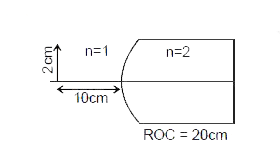
30 cm from pole in the medium of refractive index 1, virtual, erect and 4 cm in size.
40 cm from pole in the medium of refractive index 1, virtual, erect and 4 cm in size.
40 cm from pole in the medium of refractive index 1, real, inverted and 4 cm in size.
30 cm from pole in the medium of refractive index 1, virtual, erect and 6 cm in size.
The correct Answer is:B
Step by step video, text & image solution for An extended object of size 2 cm is placed at a distance of 10 cm in air (n = 1) from pole, on the principal axis of a spherical curved surface. The medium on the other side of refracting surface has refractive index n = 2. Find the position, nature and size of image formed after single refraction through the curved surface. by Physics experts to help you in doubts & scoring excellent marks in Class 12 exams.
Topper's Solved these Questions
- BOOK - MOTIONCHAPTER - GEOMETRICAL OPTICSEXERCISE - Exercise - 1 Section K - Lens Maker formula and Magnification, Image formation by convex and concave lens, Combination of lens, Cutting of lens8videos
GEOMETRICAL OPTICS
- BOOK - MOTIONCHAPTER - GEOMETRICAL OPTICSEXERCISE - Exercise - 1 Section L - Power of lens and Mirror, Silverging of lens, Displacement Method13videos
GEOMETRICAL OPTICS
- BOOK - MOTIONCHAPTER - GEOMETRICAL OPTICSEXERCISE - Exercise - 1 Section I - Dispersion of Light4videos
GEOMETRICAL OPTICS
- BOOK - MOTIONCHAPTER - FLUIDEXERCISE - Exercise-4 level-II5videos
FLUID
- BOOK - MOTIONCHAPTER - GRAVITATIONEXERCISE - Exercise - 4 Section - B Previous Years Problems15videos
GRAVITATION
Similar Questions
An extended object of size 2cm is placed at a distance of 10cm in air (n=1) form pole, on the other side of refracting surface has refractive index n=2. Find the positon, nature and size of image formed after single refraction through the curved surface.
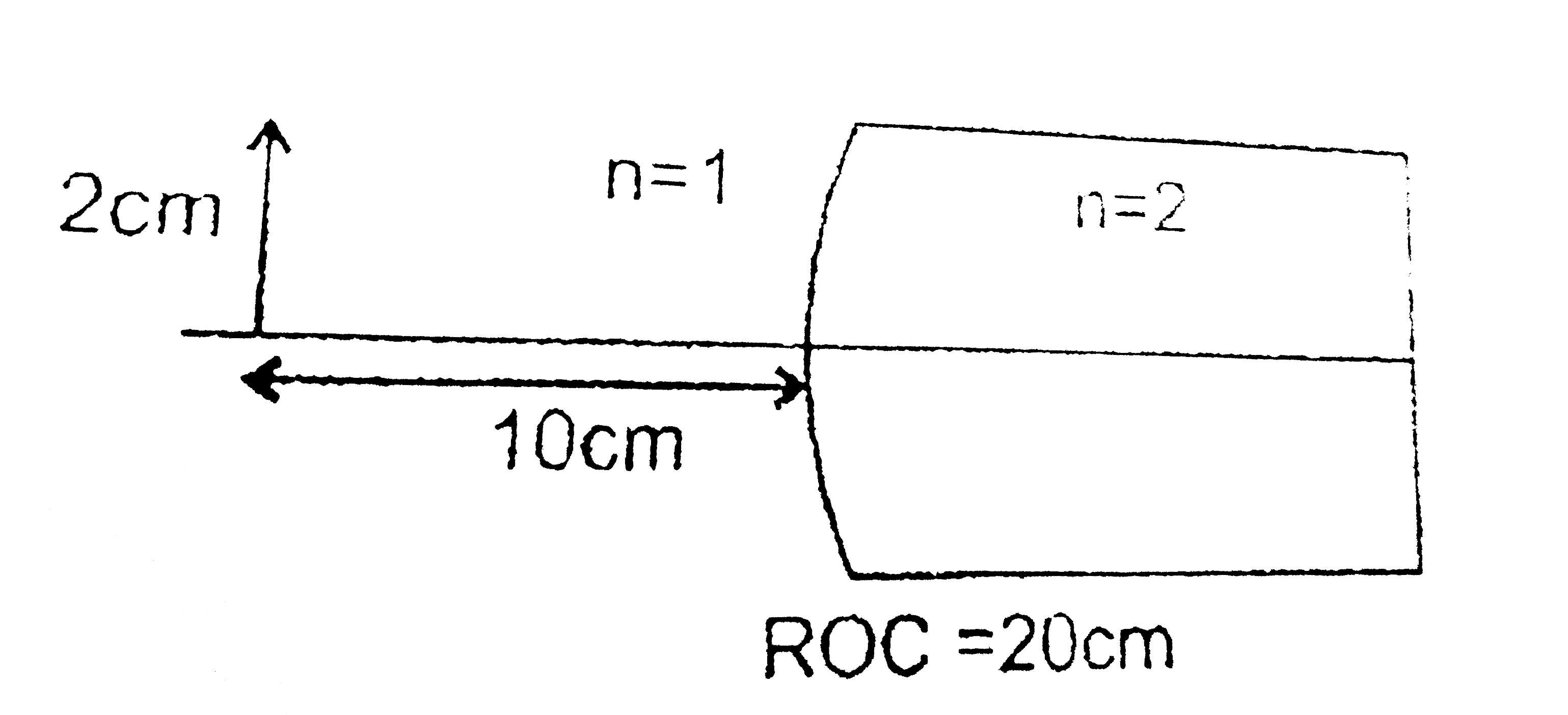 View Solution
View SolutionA convex surface of radiys of curvature 20 cm separates air from glass of refractive index 1.5. Find the position and the nature of the image of a small object placed at 50 cm in front of the convex surface.
View Solution
Knowledge Check
- Question 1 - Select One
The image for the converging beam after refraction through the curved surface is formed at
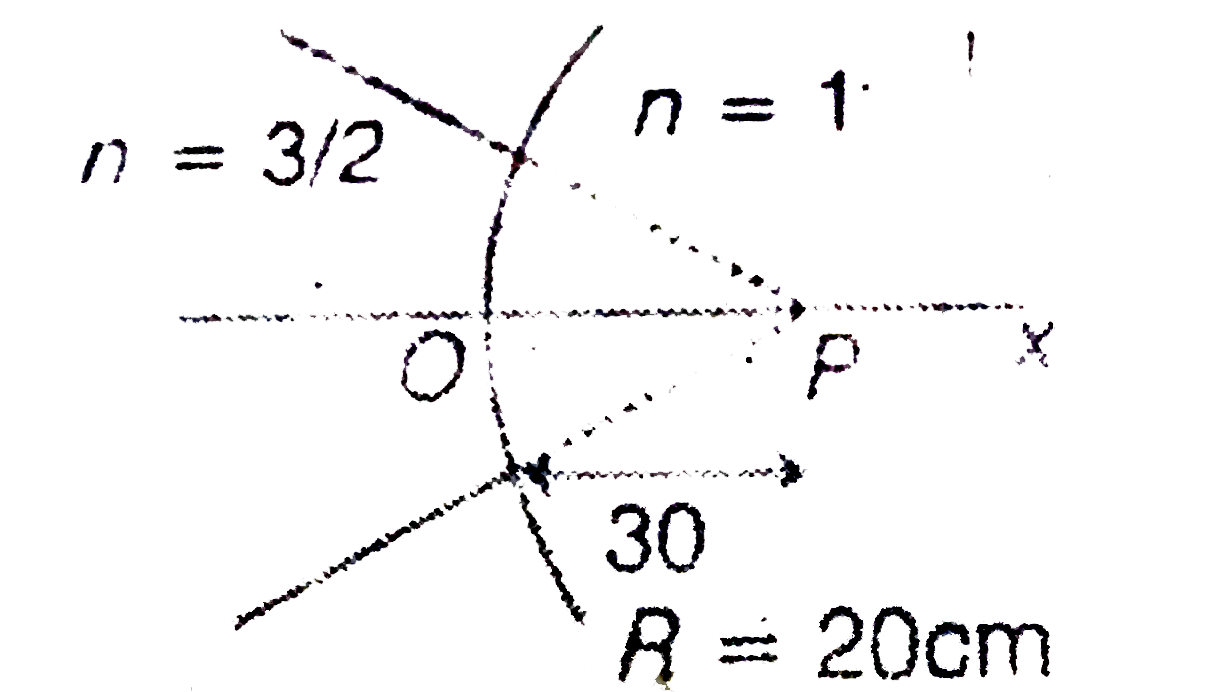 A40 cmB403 cmC20 cmD1807cm
A40 cmB403 cmC20 cmD1807cm - Question 2 - Select One
An object is placed at a distance of 10 cm (in a medium of μ = 1) from the pole of a spherical refracting surface bounding a medium of μ = 1.5. If the image formed is virtual and at a distance of 40 cm, then the spherical surface is –
Aconcave with radius of curvature = 8 cmBconvex with radius of curvature = 8 cmCconcave with radius of curvature = 3.6 cmDconvex with radius of curvature = 3.6 cm - Question 3 - Select One
An object of height 5 cm is placed perpendicular to the principal axis of a concave lens of focal length 10 cm. If the distance of the object from the optical centre of the lens is 20 cm. Position, nature and size of the image formed.
A6.67 cm, -1.67 cm, real, invertedB-6.67 cm, 1.67 cm, virtual, erectC-6.67 cm, -1.67 cm, real, erectD-6.67 cm, -1.67 cm, real, inverted
A 10 cm tall object is placed perpendicular to the principal axis of a convex lens of focal length 12 cm. The distance of the object from the lens is 18 cm. Find the nature, position and size of the image formed.
View SolutionA 10 cm tall object is placed perpendicular to the principal axis of a convex lens of focal length 12 cm. The distance of the object from the lens is 18 cm. Find the nature, position and size of the image.
View SolutionIn the given figure, the radius of curvature of curved surface for both the plano-convex and plano-concave lens is 10 cm and refractive index for both is 1.5. The location of the final image after all the refractions through lenses is
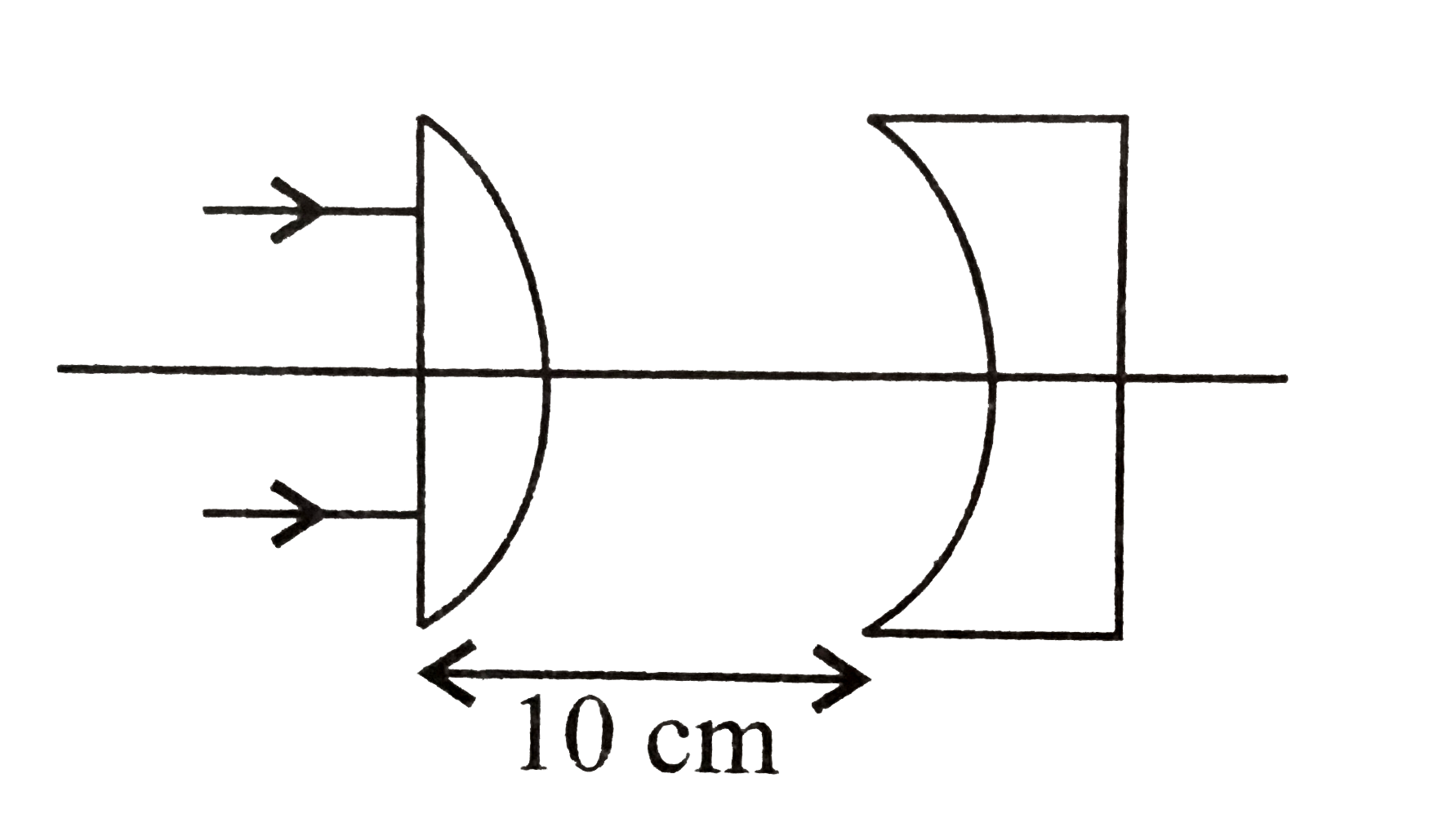 View Solution
View SolutionA parallel narrow beam of light is incident on the surface of a transparent hemisphere of radius R and refractive index μ=1.5 as shown. The position of the image formed by refraction at the image formed by refraction at the spherical surface only as
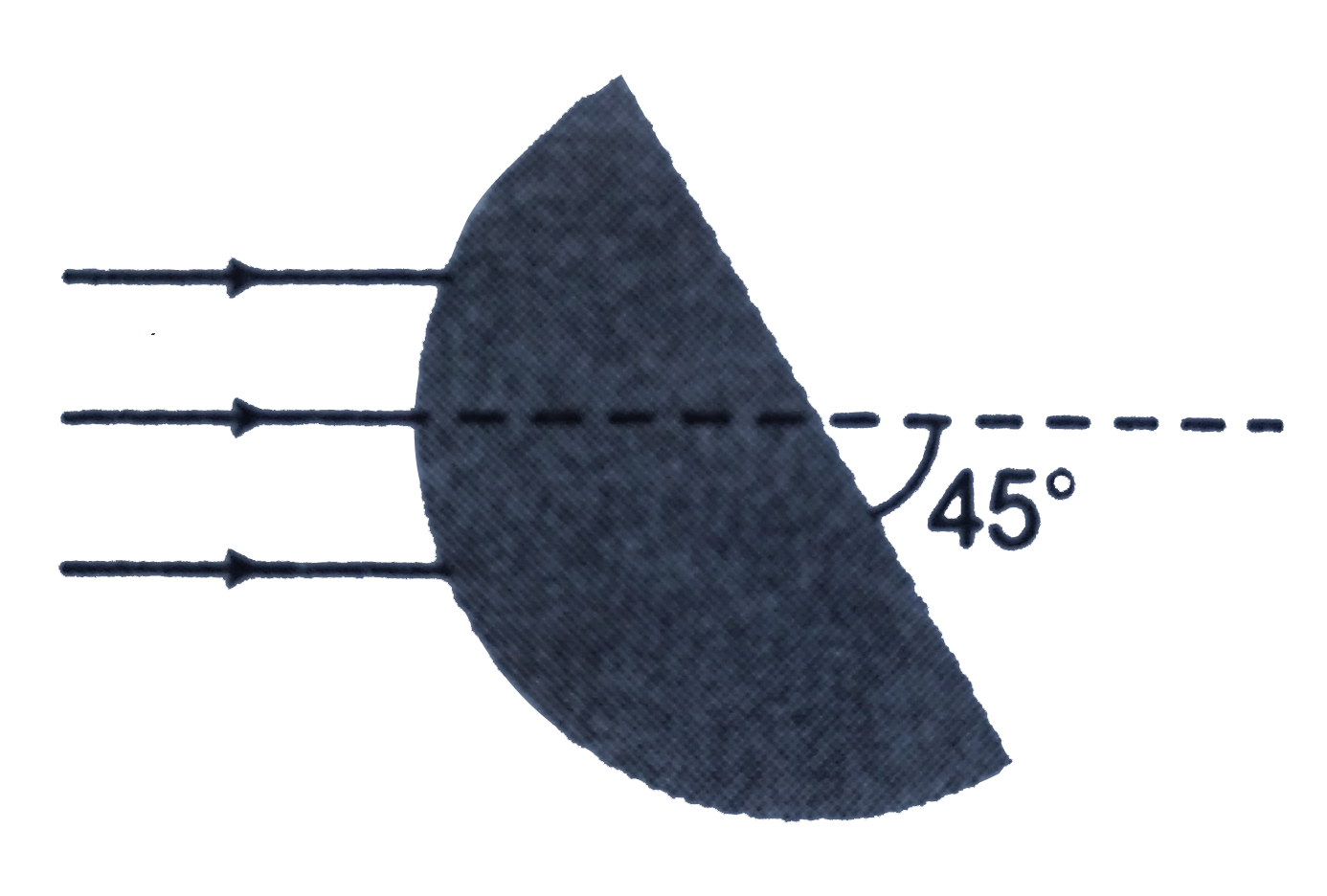 View Solution
View SolutionThe figure ,shows a transparent sphere of radiusRand refractive indexμ.An object Ois placed at a distance x from the pole of the first surface so that a real image is formed at the pole of the exactly opposite surface.
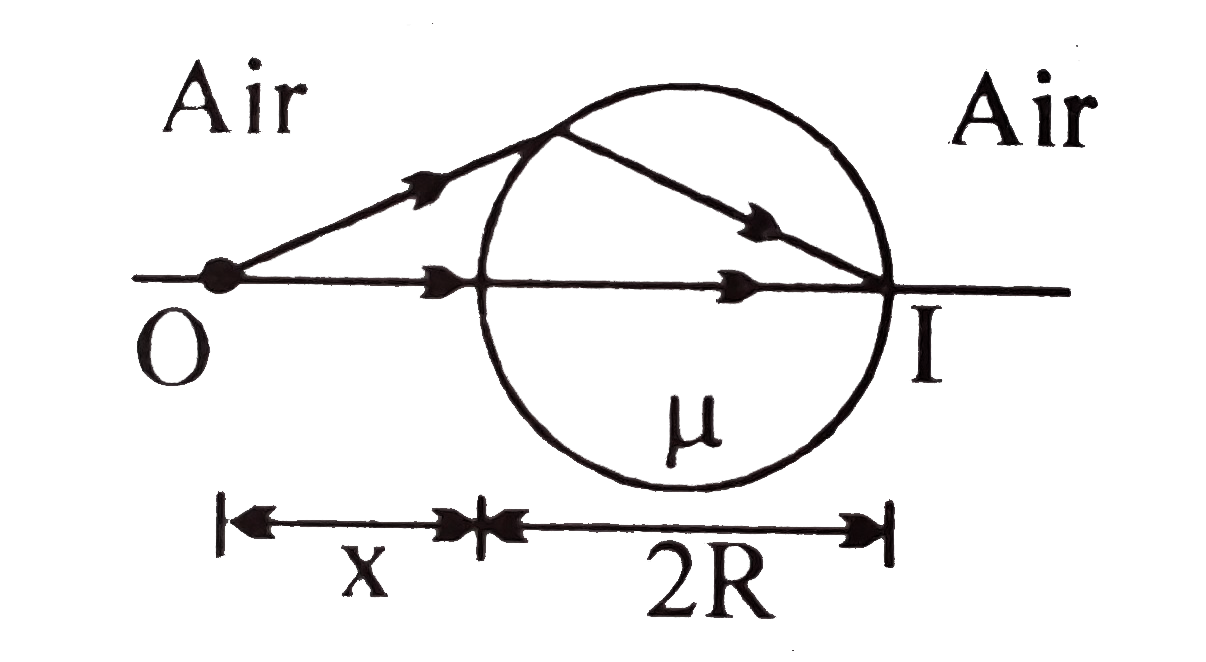 if an object is Placed at a distanceR from the pole of first surface ,then the real image is formed at a distance Rfrom thepole of the second surface.The refractive indexμ of the spher is given byView Solution
if an object is Placed at a distanceR from the pole of first surface ,then the real image is formed at a distance Rfrom thepole of the second surface.The refractive indexμ of the spher is given byView Solution

